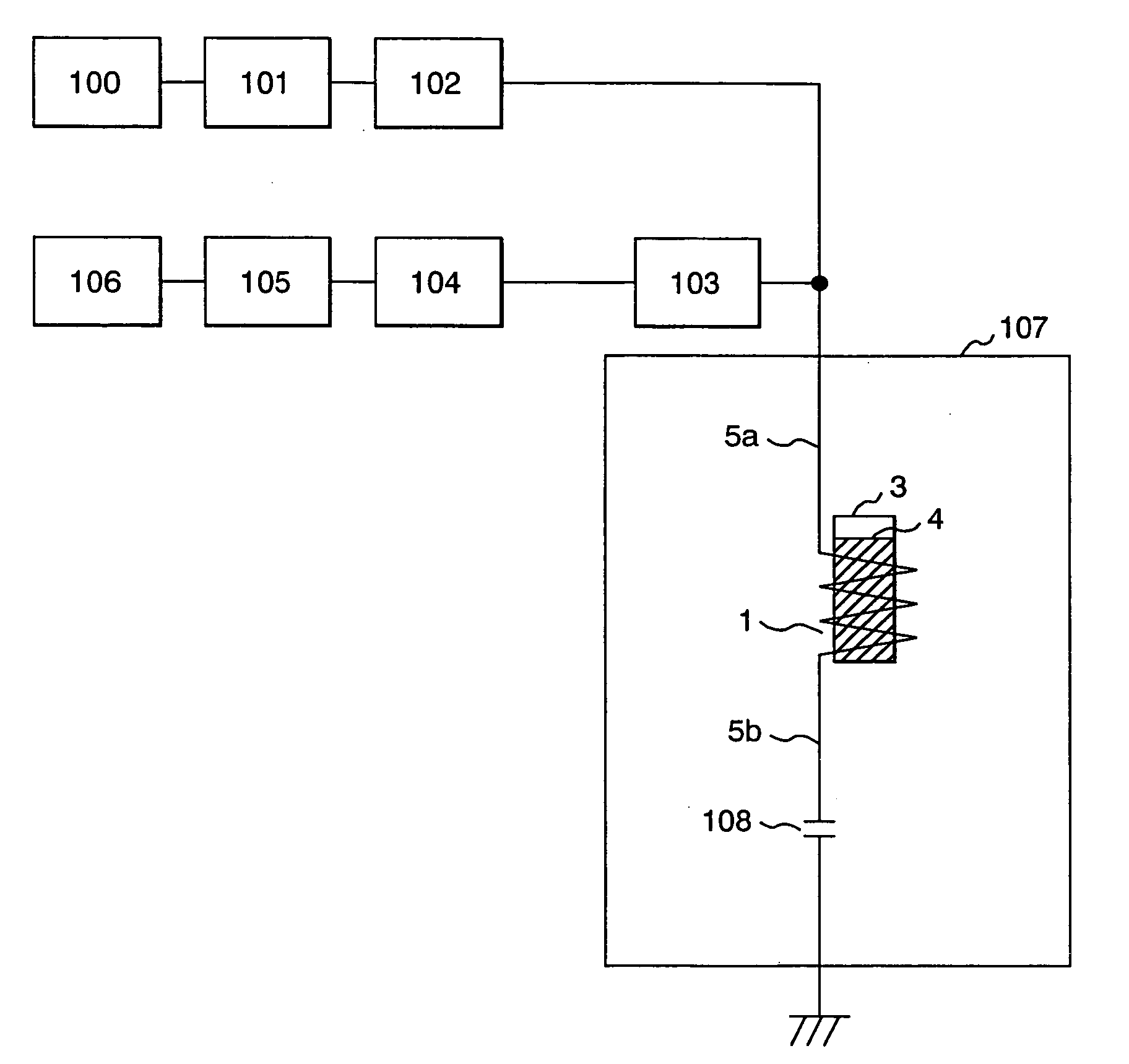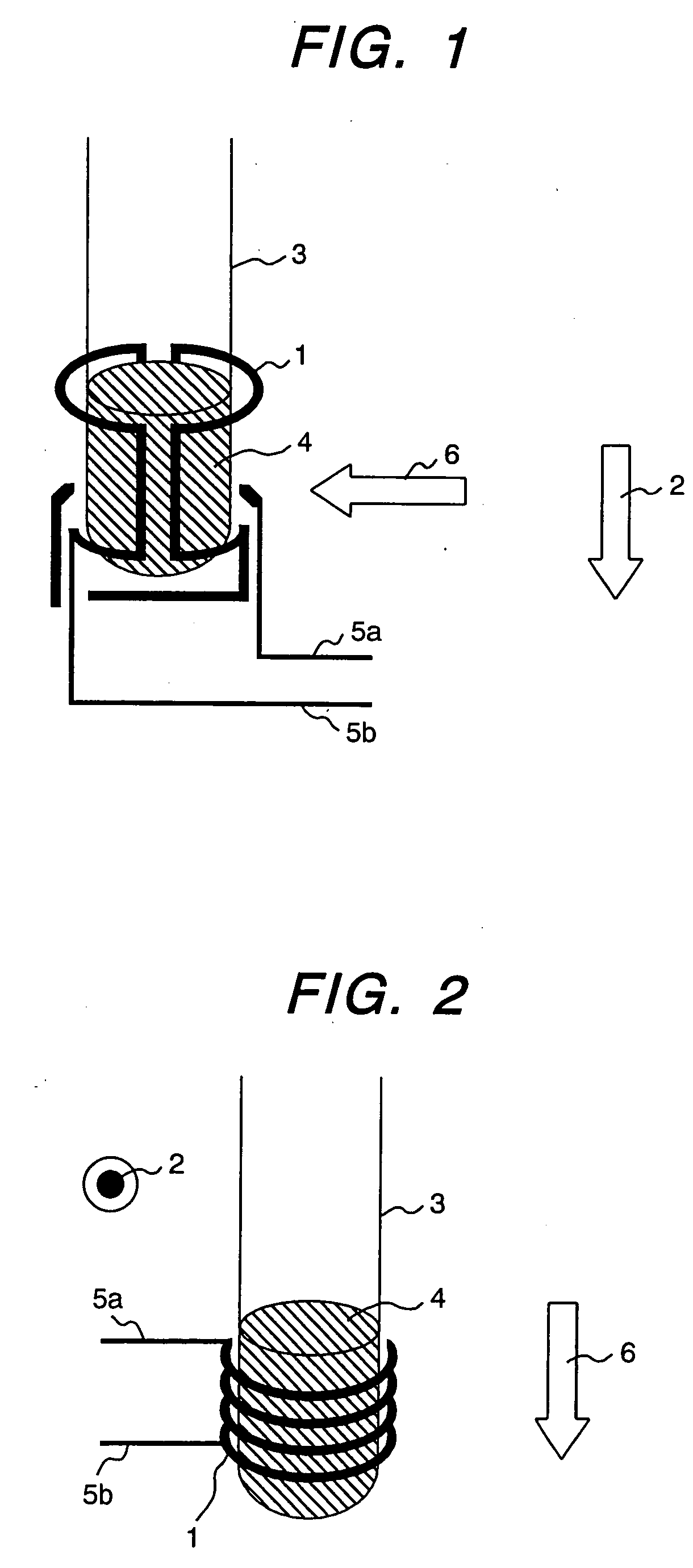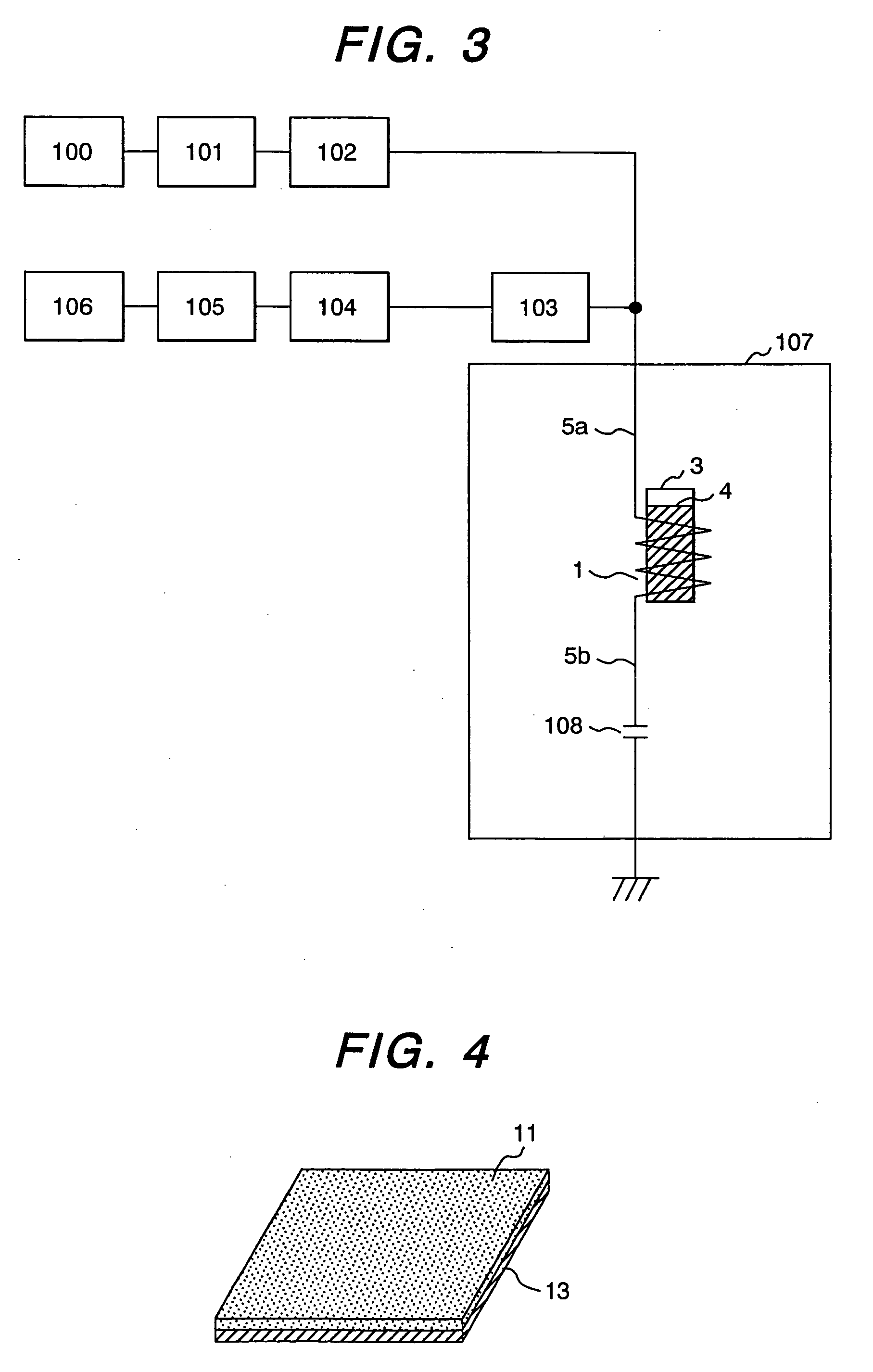Superconductor probe coil for NMR apparatus
a superconductor and probe coil technology, applied in the direction of superconducting magnets/coils, instruments, magnetic bodies, etc., can solve the problems of difficult to manufacture other shapes than flat plates, difficult to bend the superconductor, and the critical current of the oxide superconductor containing ybco worsens, etc., to achieve good bending stress characteristics
- Summary
- Abstract
- Description
- Claims
- Application Information
AI Technical Summary
Benefits of technology
Problems solved by technology
Method used
Image
Examples
example 1
[0064]FIG. 1 is a diagrammatic perspective view showing a saddle type probe coil for the NMR apparatus according to the present invention.
[0065] A coil 1 is constituted by two saddle type coils which are disposed at an outer periphery of a glass sample tube 3 so as to face each other. The glass sample tube 3 contains a sample to be measured.
[0066] The material of the coil 1 is magnesium 2-boride superconductor wire. The coil 1 constituted by one turn of two saddle type, and desired shape or the number of turns can be employed if the shape and the number of turns are the same.
[0067] The current leads 5a, 5b are bonded by soldering to the both ends of the coil 1. When current flows between the current leads 5a, 5b, the respective saddle coils generate magnetic fields in the direction of allows 6; a homogeneous magnetic field can be applied in the direction 6 of the allow at the center of the sample 4. The components are placed in the high homogeneous static magnetic field generated...
PUM
| Property | Measurement | Unit |
|---|---|---|
| critical temperature | aaaaa | aaaaa |
| frequency | aaaaa | aaaaa |
| static magnetic field | aaaaa | aaaaa |
Abstract
Description
Claims
Application Information
 Login to View More
Login to View More - R&D
- Intellectual Property
- Life Sciences
- Materials
- Tech Scout
- Unparalleled Data Quality
- Higher Quality Content
- 60% Fewer Hallucinations
Browse by: Latest US Patents, China's latest patents, Technical Efficacy Thesaurus, Application Domain, Technology Topic, Popular Technical Reports.
© 2025 PatSnap. All rights reserved.Legal|Privacy policy|Modern Slavery Act Transparency Statement|Sitemap|About US| Contact US: help@patsnap.com



